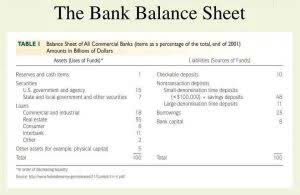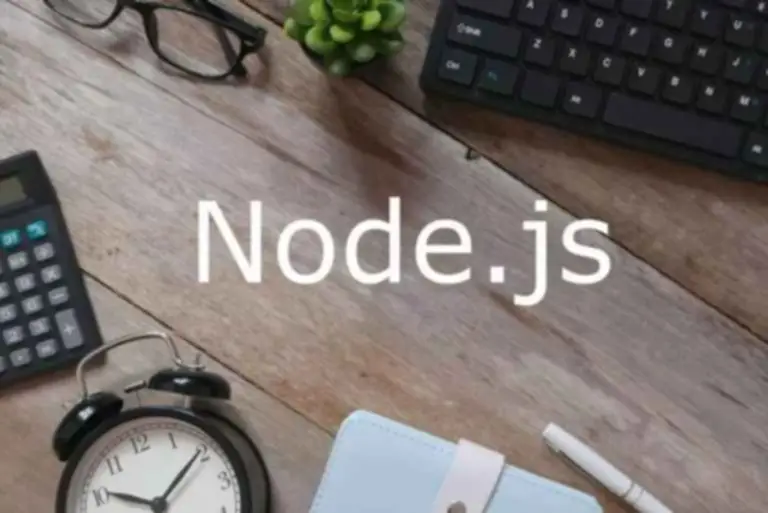The content published on this website is not aimed to give any kind of financial, investment, trading, or any other form of advice. BitDegree.org does not endorse or suggest you to buy, sell or hold any kind of cryptocurrency. Before making financial investment decisions, do consult your financial advisor. BitDegree aims to uncover, simplify & share Web3 & cryptocurrency education whats amm with the masses.
A Beginner’s Guide to Decentralized Finance (DeFi)

Plus, the transaction fees accrued when providing liquidity can often offset impermanent loss if the change in the price ratio of token deposits is relatively small. Other than arbitraging opportunities, when large orders (relative to the pool size) are placed in AMMs, it can also cause notable slippage for the traders. Like in the example https://www.xcritical.com/ for Alice, she paid 2,424 USDC for 1 ETH, higher than the market price of 2,400 USDC. Slippages happen in every pool, especially pools that are not adequately funded. To mitigate slippages, AMMs encourage users to become liquidity providers. In DeFi, AMM refers to algorithms that automatically adjust token prices in liquidity pools.
- This phenomenon occurs when the price of an asset in the liquidity pool diverges from the market price.
- A block reward is the sum of crypto awarded to a miner or validator by a blockchain protocol for successfully mining and validating a block.
- A centralized exchange relies on professional traders or financial institutions, to create multiple bid-ask orders to match the orders of retail traders, or in other words, to provide liquidity.
- Also, note that the potential earnings from transaction fees and LP token staking can sometimes cover such losses.
- A CPMM allows trading between two assets to be conducted automatically, with prices decided as a function of classic supply and demand.
Algorithmically determined exchange prices
The difference is that smart contracts “make” the market instead of humans or centralized exchanges. Market Makers (MMs) are entities providing buying and selling prices on assets from their own account with the goal of making profits from spreads. A centralized exchange relies on professional traders or financial institutions, to create multiple bid-ask orders to match the orders of retail traders, or in other words, to provide liquidity. In this system, the liquidity providers – high-net-worth individuals or companies – essentially take up the role of MMs. Automatic market makers (AMMs) are protocols powering DEXes and offering a decentralized automated approach to crypto asset exchange.
Constant Mean Automated Market Maker (CMMM)
When traders place a transaction to swap crypto they submit an amount of asset A which returns a given amount of asset B. A smart contract ensures that the total value of the liquidity pool is the same before and after each transaction. AMMs set the prices of digital assets and provide liquidity in the form of liquidity pools. Furthermore, the use of automated market makers eliminates the need for order books, making trading more efficient and less prone to manipulation. This accessibility and efficiency have allowed for faster adoption of DEXes, providing users with greater control over their assets.
What is AMM (Automated Market Makers) in DeFi
It allows for pools with more than two types of assets and uses a weighted geometric mean to maintain balance. This model can offer more flexibility and better capital efficiency for multi-asset pools. Automated Market Makers (AMMs) primarily focus on the exchange of crypto-to-crypto pairs within the DeFi ecosystem.
What are the different types of cryptocurrencies? Understanding token types
Technically, anyone can deposit their crypto assets in liquidity pools in exchange for a percentage of the trading fees. More LPs locking their digital assets minimizes the chances of price slippage and improves the liquidity of the DEX. Automated Market Makers (AMMs) have emerged as a groundbreaking solution within the decentralized finance (DeFi) ecosystem, revolutionizing the way digital assets are traded. By leveraging smart contract protocols and predefined mathematical formulas, AMMs enable seamless and direct token swaps, eliminating the reliance on traditional order books and intermediaries. Automated market makers (AMMs) are a type of decentralized exchange (DEX) that use algorithmic “money robots” to make it easy for individual traders to buy and sell crypto assets. Instead of trading directly with other people as with a traditional order book, users trade directly through the AMM.
Risks of first-gen automated market makers
Learn more about Consensus 2024, CoinDesk’s longest-running and most influential event that brings together all sides of crypto, blockchain and Web3. In such a scenario, we say that the liquidity of the assets in question is low. Discover the different types of cryptocurrency, including Bitcoin, stablecoins, and NFTs, along with their key features and real-world applications. If crypto tokens like Bitcoin are completely digital, what gives them real-world value? MoonPay also makes it easy to sell crypto when you decide it’s time to cash out.
Decentralizing market making this way is intrinsic to the vision of crypto. “Off-chain” transactions with PMMs can be executed in OTC Mode (over-the-counter). An aggregator of liquidity from multiple DEXes ensuring the best swap rates. A cutting-edge tracking tool offering accurate, detailed and well-organized crypto portfolio information. However, the decision might backfire on Apple, eroding the company’s reputation as a people-focused computer behemoth over the years.
What Are Automated Market Makers (AMMs)?
Like everything in DeFi, the space is evolving constantly, with today’s industry already vastly different to the early days of the DEX and the first AMM deployments. AMMs may not be perfect, however, and some, such as constant sum AMMs, are rarely used as a standalone solution due to being liable to losing control of liquidity. Due to the way AMMs work, the more liquidity there is in the pool, the less slippage large orders may incur. Another acronym use case can also stand for Proactive Market Maker, when referred to the DoDo DEX protocol, copying the behavior of AMMs and human traders. DEXes provide users with an opportunity to control slippage by setting its limits.
In the case of Uniswap, LPs deposit an equivalent value of two tokens – for example, 50% ETH and 50% DAI to the ETH/DAI pool. The constant, represented by “k” means there is a constant balance of assets that determines the price of tokens in a liquidity pool. For example, if an AMM has ether (ETH) and bitcoin (BTC), two volatile assets, every time ETH is bought, the price of ETH goes up as there is less ETH in the pool than before the purchase.
This unethical practice can negatively impact the fairness and integrity of AMMs. In essence, the liquidity pools of Uniswap always maintain a state whereby the multiplication of the price of Asset A and the price of B always equals the same number. Conversely, centralized exchanges (CEXs) use an order book to match a buyer with a seller to execute a cryptocurrency trade at a mutually agreed exchange price.
The exchange looks for a buy order that matches your selling price and fulfills it. On the contrary, AMM exchanges do not need to have a counterparty on the other end to facilitate the trade. Instead, you interact directly with the smart contract in a peer-to-contract (P2C) manner. The main difference between order books and AMMs is that the pricing and order matching are automated in AMMs.
Traders provide liquidity, and are thus known as liquidity providers, while the AMM handles asset pricing according to how much of each token is available. Uniswap is the leading decentralized cryptocurrency exchange on the market, with billions of dollars traded daily. Its simplicity and user-friendly interface make it a top choice for many traders. The platform allows users to trade a wide range of ERC-20 tokens on the Ethereum network and has recently expanded to support tokens on other networks such as Polygon and Optimism. AMMs enable trading of a wide range of crypto assets that may not be available on traditional exchanges. These platforms support various tokens, including newly launched or less popular ones.
Other risks include smart contract vulnerabilities and changes in the overall liquidity of the pool. Users, known as Liquidity Providers (LPs), contribute their assets to these pools and, in return, receive LP tokens. These tokens represent their share of the pool and can be redeemed later for their portion of the pool plus any accrued fees. To trade with fiat currency, users usually need to go through a centralized exchange or other on/off-ramp services to convert fiat to cryptocurrency before interacting with AMMs. Dynamic Automated Market Makers (DAMMs), like Sigmadex, utilize external data feeds to adjust liquidity distribution in response to market volatility, enhancing capital efficiency. Proactive Market Makers (PMMs), such as DODO, incorporate real-time price feeds to adjust liquidity dynamically, mimicking traditional market-making mechanisms and reducing losses.

They allow digital assets to be traded in a permissionless and automatic way by using liquidity pools rather than a traditional market of buyers and sellers. AMM users supply liquidity pools with crypto tokens, whose prices are determined by a constant mathematical formula. Liquidity pools can be optimized for different purposes, and are proving to be an important instrument in the DeFi ecosystem. These AMM exchanges are based on a constant function, where the combined asset reserves of trading pairs must remain unchanged. In non-custodial AMMs, user deposits for trading pairs are pooled within a smart contract that any trader can use for token swap liquidity. Users trade against the smart contract (pooled assets) as opposed to directly with a counterparty as in order book exchanges.
AMMs are driven by smart contracts and therefore enable to fulfill fast and secured exchanges without traditional order book usage. As a financial instrument, the automated market maker has been known before, but the creation of a Constant Function model allowed for its further application to digital assets. Automated market makers (AMM) are decentralized exchanges that pool liquidity from users and price the assets within the pool using algorithms. The exact mechanics vary from exchange to exchange, but generally, AMMs offer deep liquidity, low transaction fees, and 100% uptime for as many users as possible.
After clicking the swap button, the algorithm calculates how much the trade impacts the liquidity pool’s reserves – after which a price quote is given. Different liquidity pools, however, can offer different returns on investment, so yield farmers move liquidity around between different assets to increase their returns via the above mechanism. It also creates opportunities for arbitrage traders who could notice that the price of a token on a given DEX is considerably different to the wider market.
Each AMM gives its liquidity providers the power to vote on its fees, in proportion to the number of LP tokens they hold. Whenever anyone places a new vote, the AMM recalculates its fee to be an average of the latest votes, weighted by how many LP tokens those voters hold. Up to 8 liquidity providers’ votes can be counted this way; if more liquidity providers try to vote, then only the top 8 votes (by most LP tokens held) are counted.






















